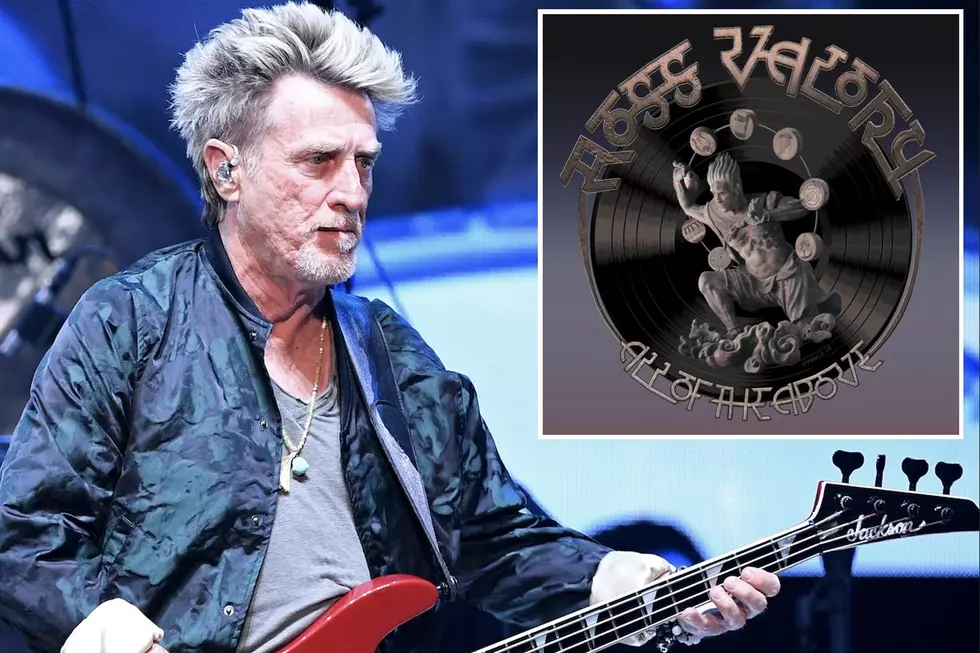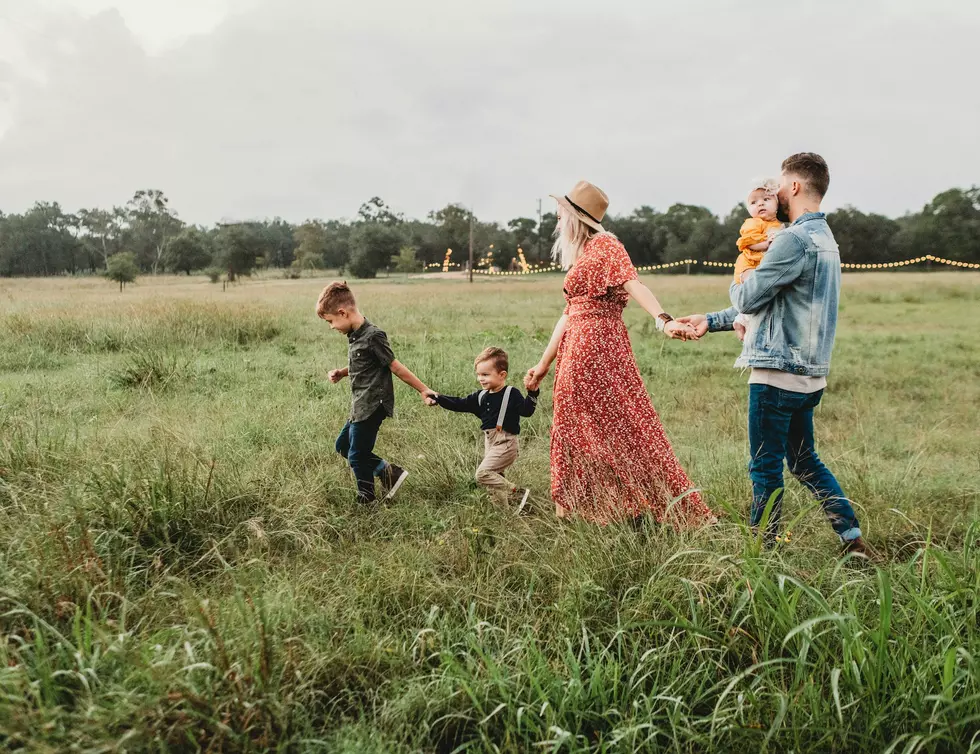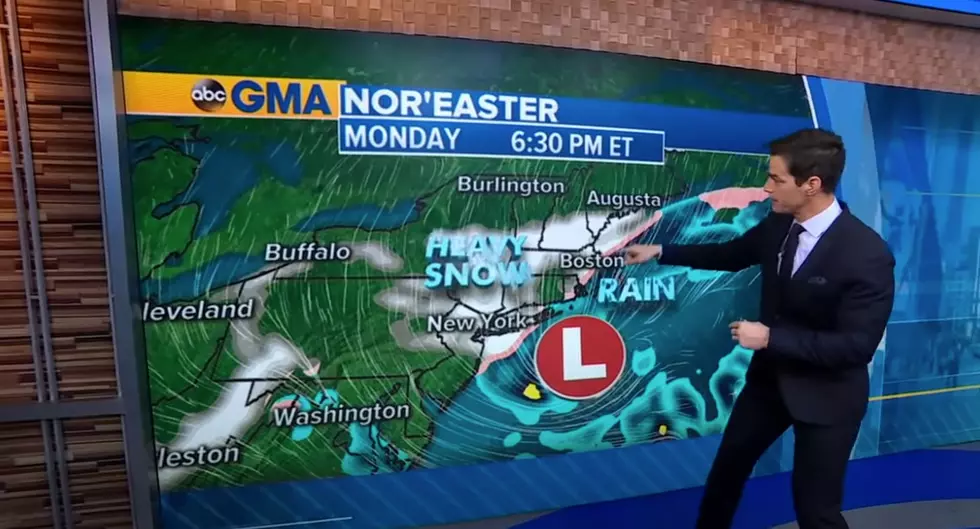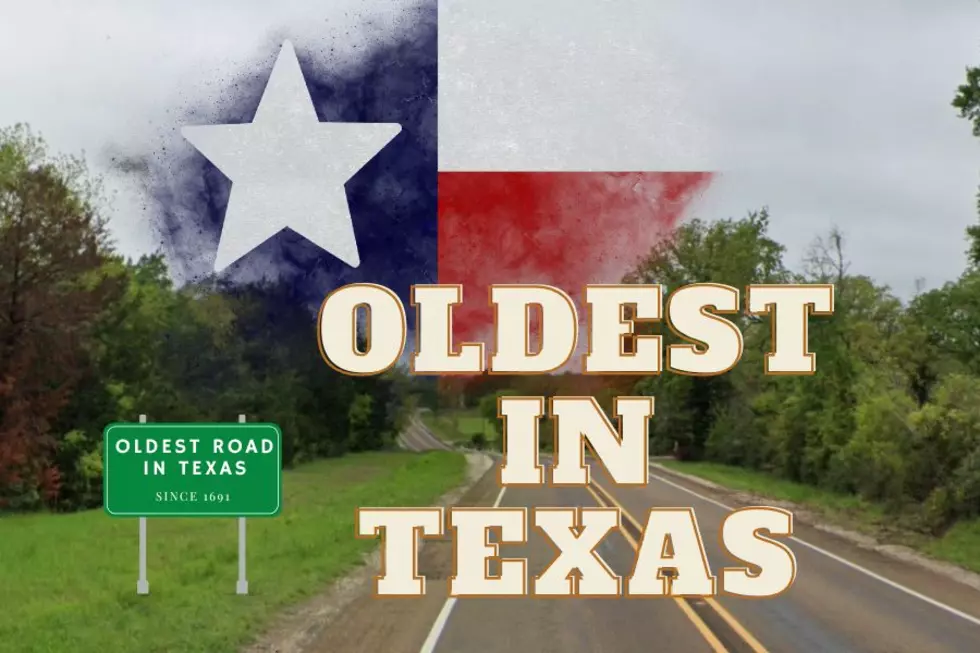
How Ross Valory’s Debut Connects With Journey’s Earliest Triumphs
Ross Valory's aptly titled solo debut All of the Above returns Journey's original bassist to his rangy '70s-era roots. Genres once again serve as mere speed bumps on a free-wheeling instrumental ride that very much connects with Journey's self-titled debut and their often-overlooked soundtrack work on Dream After Dream.
The album was produced by Valory and co-produced by Night Ranger's Eric Levy and Jacob Stowe, with musical contributions from former bandmate Steve Smith, Greg Errico of Sly and the Family Stone, current members of Santana, Neal Schon's son Miles, and Tubes co-founder Prairie Prince, a former member of the group that evolved into Journey.
Each single release from All of the Above, beginning with a tribute to engineer Tom Size (Aerosmith, Mr. Big and Y&T) simply called "Tomland," has been created by Prairie Prince's long-time artistic partner Michael Cotten. UCR later exclusively premiered a clip for the Latin-fired "Wild Kingdom."
READ MORE: Why Journey Never Accepted the 'Corporate Rock' Tag
Valory joined UCR to discuss the winding path to his first album, those early days with Prairie Prince and founding Journey manager Herbie Herbert, the early song that connects directly with his exciting new era, and what's next:
Congratulations on this solo debut. You've got song ideas from across the decades, but it comes together somehow as a cohesive whole. It finds its way. How did you narrow down the track listing?
Well, it starts with the rather eclectic approach to writing and recording material. You could say that as soon as I began accumulating these recordings, I was seeing a challenge – but for me personally, it's like, that's just the way I write. I have so many influences from the day I started listening to music to this day, every song has a different influence. I call it Impressionism. But there was a challenge to start with; these songs are all very, very different. How do we release each song in an order, let alone sequencing them? An album comes out because there's a sufficient amount of material to release, even though an album is somewhat of an antiquated term, but I consider it in a traditional sense. My team and I walked through several ways of sequencing the songs and, of course, there are too many ways to do it – but we settled on the order as it appears on All of the Above.
I think the ultimate – pun intended – way to listen to the album is to turn off your phone, people. Then find the best sound system that you have available to you. Turn out the lights, or close your eyes and listen to the whole thing. It is an adventure, the way it is sequenced and the way the songs appear in terms of dynamics and energy, and rhythm. That's that's how we did it. We just threaded it together in a way where it's an adventure. I'm sure the sequence could be different. I, in my own way, listen to songs in different orders. I have a different playlist according to how I want to hear it.
This project seems to have emboldened you. It sounds like, creatively, you're in an inspired place. Is this the beginning of a new era of solo activity for you? Will we see more?
Yes, you absolutely will. This material has been recorded over the last 10 or 12 years, and much of it has been complete, mixed, produced, mixed and mastered and waiting for this moment – or at least waiting for the separate releases of the songs. In the meantime, while in preparation for what everyone is seeing and hearing in the last couple of months, I've been recording new material – and that's an ongoing process. Frankly, even while balancing the amount of deserved time and energy that promotion requires, I've doubled down. I've continued with my creative activity. I have new material, original material that I'm recording. I'm even working on some other cover tunes, my favorite songs from across most of my life that I've always been inspired by. So to answer your question, this is an ongoing process. There will be more material released either as possibly an EP or as another album.
Watch Ross Valory’s ‘Wild Kingdom’ Video
It was interesting to me to see Prairie Prince's name associated with All of the Above, extending a musical relationship that traces back to your pre-Journey days in the Golden Gate Rhythm Section. It was kind of a whirlwind. You guys played a couple of really big shows right away before Aynsley Dunbar came in.
Well, actually, "whirlwind" is the operative word here. Herbie Herbert, our managing partner, was responsible in very much in his own way for the success of Journey – or at least putting it on the map. He had been working with Santana and was friends with Neal Schon and Gregg Rolie. They all three left that organization in approximately 1971 – and Herbie and I go further back, having been involved with a couple of other bands out where we grew up when we were younger. He was aware of my work with George Tickner, who was the original guitarist with Journey along with Neal Schon, and he simply put all of these people together – including Prairie Prince, who was already in the Tubes. He put these five people in a room – in a very small one, at that – and, the creativity, the energy, and the power of what was going on there was magic and constant and overwhelming. So from that point, the idea was to put together this rhythm section that could accommodate any artist who came in to write or record in the city.
In those days, that was commonplace, but it quickly developed into what became Journey. The magic moment for that first iteration of the band was to have performed on New Year's Eve 1973 at Winterland. Yeah, and having stayed awake basically for the remainder of the night and gotten on a plane and played New Year's Day the next day, 1974, at the Crater Festival in Oahu. So that definitely was a whirlwind, and it was a magic time. As you know, however, Prairie had to remain with the Tubes: There were actually two drummers in the original band, and the other drummer passed away very quickly from some form of cancer. So Prairie was not free to move on with this. Speaking of Prairie, he's very much involved with All of the Above, including the artwork for the album and the artwork for the title cards for my videos. And of course, he appears on "Tomland," the first single release from January. Furthermore, I have the blessing and the privilege of working with his artistic partner from way back to the Tubes days. Michael Cotten is the videographer. So I am absolutely thrilled to be working with both of these people. What they bring to the table is original and sophisticated and artistic.
READ MORE: Ranking All 52 Journey Songs From the '80s
Michael Cotten has such an interesting visual style. The videos you've released are of a piece in tone, but they're very different. I think that fits perfectly with the album.
It really does, given the eclectic nature of the album. The songs are so different. Michael, first of all, being very, very inspired by the music – that really helps. I mean, you can always bring in a professional who's artistic and sophisticated and they can do their work with your music. But to begin with, he's really inspired by the music. That's an added layer of motivation. He gives a different flavor for every music video. I've gotta tell you, we've completed work on the next single and he's already – well, Michael has got a big stove with several burners. He's been working up his concepts for this, ideas for these other songs, and the variety and the difference in approach and style is quite evident from song to song. I'm just very excited about what he's doing, what he's bringing to the table here, in terms of a visual representation.
This reminds me of something, though. I should mention a lot of people say, "Man, I can hear this in the film. This is movie soundtrack material." It absolutely, absolutely is in my estimation, and you'll see more of that as the time comes for these other releases. It's cinematic. I had this thought, Nick, when it came to me that I should provide listeners with something visual for YouTube. It's a very reasonable thing, but I'd never thought about it for the most part about. What would I want to present in the way of visuals? I had this idea that's gone by the wayside, but I think it's very clever and original: I had thought at one point for the first video that it would be a black screen. There'd be bold white lettering that says, "Music is visual. Close your eyes or turn out the lights." OK, well, it turns out that I didn't need to reduce my scope to such a small approach, given the advent of Michael Cotten. It's like, "Wow." I'm just absolutely amazed what he does. OK, you want visuals? There you go.
Listen to Journey’s ‘In My Lonely Feeling / Conversations’
You mentioned George Tickner, who died last summer. Can you put his contributions in perspective for people who may not be aware of his early tenure in Journey?
Well, George Tickner and I go way back to our teenage years. He grew up in the same area I did in Contra Costa County, which is the San Francisco East Bay. And from the get-go, as soon as I heard about him and met him, I realized he was a very, very original writer. Even his selections of chords were very, very unusual. So, he had this this knack for visual music. His music has always been very visual, and he and I worked off and on in a couple of projects. Then Herbie brought us both to the Journey fold and his contribution to the music that Journey began with – which is obviously quite different from the music that Journey became known for – was a major contribution. I mean, with the songs "Topaz" and "Kahoutek" and his collaboration in writing "Mystery Mountain," he was a major influence on the concept of the original Journey as a fusion band, an experimental fusion band. As a writer and and even as a player, he really had his day in the sun with early Journey. Of course, that evolved into something completely different – and with no regrets – but George played a big part in influencing the beginnings of the band.
Talking about that transition, the best-known Journey song with a Ross Valory co-writing credit is "Wheel in the Sky." To me, that's the bridge between these eras. Can you take us into that song's long creative process?
You know, I'm complimented by that but there were a lot of people involved with writing that song – including Robert Fleischman, Steve Perry, Gregg Rolie, Neal Schon and Diane Valory, my former wife. It evolved over a few years time across different configurations of band members, and so that was a collaborative effort. The lyrical content and the musical development took a while, but it solidified with Steve Perry's recording. A contribution of mine that would be more substantial as a writer is from the first album, a medley of "In My Lonely Feeling / Conversations."
While "Conversations" isn't entirely my composition, that's something I'm very proud of. I wrote it on piano and demonstrated it to the band, but in order to perform it, Rolie played the piano parts and I played the bass. So as it relates to what I'm doing now, All of the Above is closer to "Conversations" than "Wheel in the Sky." There's also another lesser-known album that all of us that participated in that I am very proud of. It's called Dream After Dream. That again was the perfect setting for me to bring even more material to the band, even though generally the band's style had shifted to vocal-oriented popular music.
We had this opportunity to do a complete detour in collaboration with Toho Films and a producer of a movie. I don't think it went anywhere but we really had the freedom, as I believe I do now with what I'm doing, to just express and not be hampered by or limited by a market or a demographics or a certain genre. So, Dream After Dream was definitely a dream project for me. All the material in that album and the first albums for Journey, they relate directly to what I'm doing now – which is basically free expression. We're not limited to a 3.5 minutes or four minutes, and not necessarily limited to vocal music.
READ MORE: Top 35 Journey Videos, Together and Apart
The music business has changed so much since those breakout years. How do you define success in the modern age?
I'm doing what I want to do. I'm free to express that and that in itself is a sign of success to me, Nick. I mean, we'll see what happens with my project and my songs and my albums, but to me, frankly, I've already succeeded in several ways. I really have. I'm joyous and happy. My initial vision for what has now come out to the world was I had so much material. Some of them were complete, building up over decades. "I'll get around to my solo album. I'll get around to it." But there was a point about 12 years ago when I said, "Well, why wait? Why not overlap the time that I have when I'm off the road and begin completing these things?" That, to me, is the first sign of success. I remember three or four years ago when we completed [a cover of Santana's] "Incident at Neshabur" When we we finished those tracks very quickly and with great amount of energy, I looked around the room. I said, "That's it. We're done. I have succeeded in in completing something that I've been thinking about for years. This is success."
OK, the next vision, the next motivation for me was: I've recorded all this beautiful stuff. Now let's see if I can have an opportunity to share it with the world. The idea is, it's not about carving out my chunk of the music business or another career. Nick. No, I've already done that. Now, I just want the opportunity to share it with the world for people to hear it – and I guess in terms of music video, for people to see it. It's another sign of success. What will come of it? We'll see. I mean, this is a challenge. We began in this conversation talking about the variety of material and how to present that. You know, my genre, Nick, is no genre – and that can be challenging. It's bold, it's unconventional, but so far, so good. So far, so good.
Watch Ross Valory’s ‘Tomland’ Video
As you move forward to this next phase in your career, are there times when you hear Herbie Herbert's voice in your head? What's the best piece of advice he ever gave you?
Two things. First of all, regarding what I'm doing, he didn't get to hear much of it before he passed. A lot of it was not complete, but we did talk about it. I likened my approach and my vision for what I'm doing to what he did as Sy Klopps. He called it his "Walter ego," and it was a very, very fun, exciting experience. He didn't care whether it was successful, or whether it carved out something in the blues. He had a following. He played the Fillmore numerous times and and he had fun with it. That was the idea. Just be free, to have fun. So that relates directly to our common idea about what I'm doing. The other thing that he said on many occasions when I brought him material from a band I had put together in the late '80s called the VU or music from other artists for his opinion: He says, if you want to succeed in getting noticed, let alone finding your place in the music business, you need a manager who's not only trustworthy, experienced and capable. They have to be passionate about your music.
That's reflects directly his passion for Journey's music and dedicating every ounce of his energy and every day to it. So, that's the other piece of advice – and I believe I have that person. You have to have someone like that. You need the unsung hero who pays attention to all the tedious details. Managers oftentimes are unrecognized for their part in the success of a band or of an artist. So, to tie the thought together, Herbie Herbert evokes two things. One is, have fun with this – that's what it's about. The other is if you want to get noticed and have any success in having fun, in this case, you need a good manager.
Eric Levy played a key role in bringing All of the Above to completion. How did you meet?
Eric Levy is a fine musician that I met when he was on tour with Night Ranger and Journey. He is still with Night Ranger, and I've been working with him since the beginning of the recordings – which started with "Wild Kingdom" 12 years ago. He's a fine musician, and secondarily, he has talent in audio engineering. Then there's [fellow All of the Above co-producer] Jacob Stowe, who is a very, very fine engineer, but also happens to be a musician. So between the three of us, this is what we produced together. There's a core team there, the three amigos. There's three generations. Eric is young enough to be my son, and Jacob is young enough to be my grandson. That's all telling about my age! But, I'm proud to cover the generations here and have these talented people to work with.
There are a lot of Journey and Santana connections on All of the Above, but the album is really your moment to shine. What it's been like to find yourself at centerstage after all these years?
Nick, pinch me. "Is this really happening now?" Yeah, it is. That's a very good question. There are many aspects of what I'm doing – either in terms of writing, arranging, recording, promoting, interviewing – That are all too familiar to me. However, this time I'm in the room alone, so to speak. Sometimes I've just struck. It's like a lightning bolt. It's like, "Is this really happening?" Because I waited a long time to do this, and and it took a lot of time and energy to build up to this. Pinch me. That's all I can say.
The Best Song From Every Journey Album
Gallery Credit: Nick DeRiso
You Think You Know Journey?




